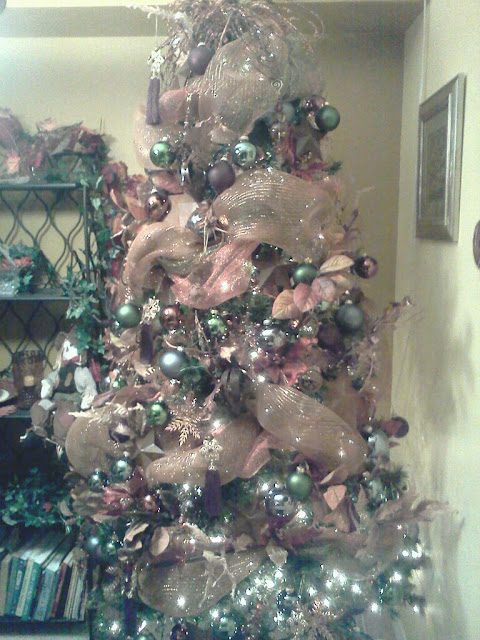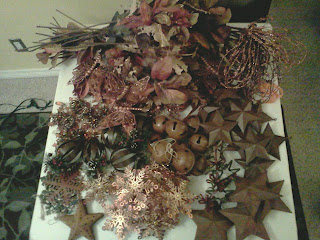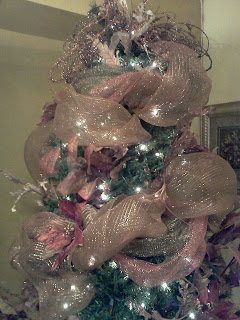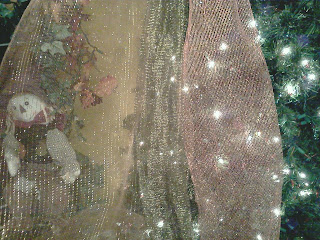(Time Required: 45 minutes)
The new addition to this photo is the glass ornaments in shades of hunter green, blue-gray and brown along with the not well seen amber blown glass ornaments. Standard round glass balls are not as elegant looking however they are less expensive and easier to replace than collectible glass ornaments. Add a new set of more expensive ornaments each year and you will have the tree of your dreams eventually. Shop for sales at Hobby Lobby where by November the ornaments are 50% off nearly every other week. After a few years your creativity will continue to blossom and you will find this a hobby that is both enjoyable for you and those that will see your tree all season long.
I hope your Christmas this year is both blessed and beautiful. I will post finished pictures of other projects this year as I go. Here is a picture of my porch this year.
The new addition to this photo is the glass ornaments in shades of hunter green, blue-gray and brown along with the not well seen amber blown glass ornaments. Standard round glass balls are not as elegant looking however they are less expensive and easier to replace than collectible glass ornaments. Add a new set of more expensive ornaments each year and you will have the tree of your dreams eventually. Shop for sales at Hobby Lobby where by November the ornaments are 50% off nearly every other week. After a few years your creativity will continue to blossom and you will find this a hobby that is both enjoyable for you and those that will see your tree all season long.
I hope your Christmas this year is both blessed and beautiful. I will post finished pictures of other projects this year as I go. Here is a picture of my porch this year.














